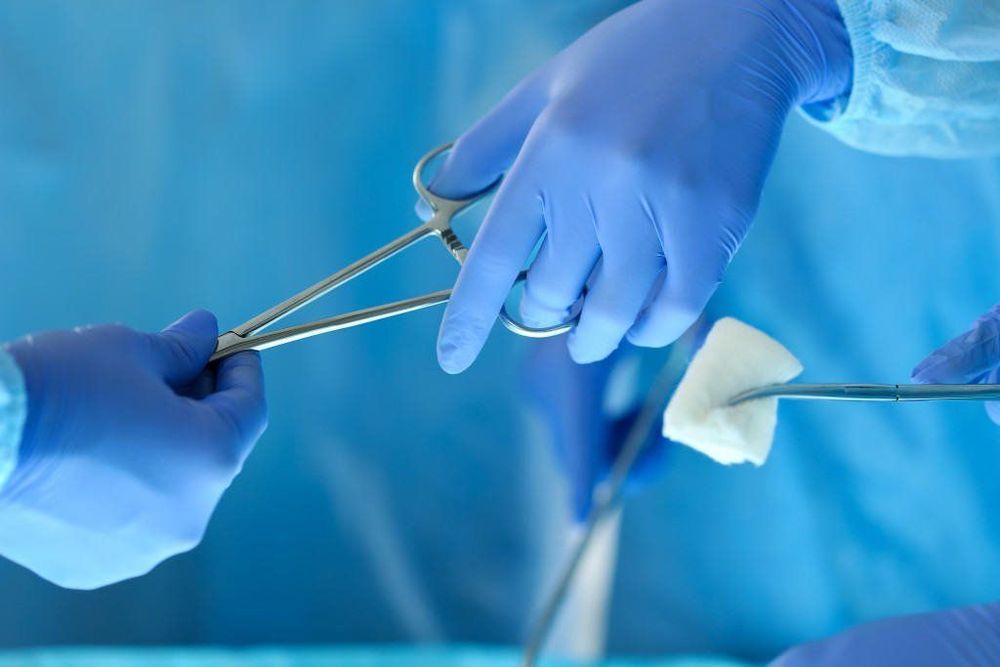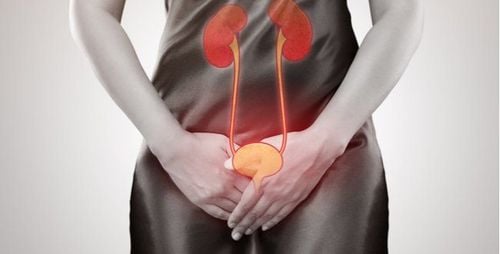This is an automatically translated article.
Urinary incontinence - loss of bladder control is a common condition that occurs in older people, causing discomfort. The severity of urinary incontinence ranges from mild, such as urinating when you cough or sneeze, to severe, such as urinating so suddenly that you don't have time to go to the bathroom.
1. Signs of urinary incontinence
Urinary incontinence is a passive leak of water. The amount of urine that leaks can increase slowly.
Urinary incontinence can be divided into 4 types as follows:
Stress urinary incontinence : occurs when the bladder is pressured by sneezing, laughing, exercising or lifting heavy objects Urinating incontinence impact: caused by a sudden urge to urinate. You may have to urinate throughout the night and often. Urinary incontinence can be caused by a minor problem such as an infection or by a more serious condition such as a neurological disorder or diabetes. so the leak. Mixed incontinence : occurs when the different types of urinary incontinence come together. If urinary incontinence occurs frequently or severely affects your life, you should see your doctor to get it checked out. .
2. Causes of urinary incontinence
Urinary incontinence is not a disease, it's a symptom. It can be caused by daily habits, underlying medical conditions, or physical problems.
Certain drinks, foods and medicines such as diuretics can irritate your bladder and increase urine output, including:
Alcohol Caffeine Carbonated drinks and sparkling water Artificial sweeteners Chocolate Chili Foods high in spices, sugar, or acids, especially citrus fruits Heart and blood pressure medications, tranquilizers and muscle relaxants Vitamin C Large amounts of urinary incontinence can also be caused by easy-to-treat health problems, such as:
Urinary tract infections: Infections can irritate your bladder, making you need to urinate more, and sometimes incontinence. Constipation: The rectum is located near the bladder and connects many nerves together. Compressed discharge in the rectum causes these nerves to become overactive and increases urinary frequency. Urinary incontinence can also be a persistent condition caused by a number of factors such as:
Pregnancy: hormonal changes during pregnancy can lead to stress causing you to have urinary incontinence Childbirth: Women who have given birth are at increased risk of uterine prolapse, where the bladder, uterus, rectum, or small intestine can be pushed down and can affect the vagina, weakening the muscles that control the bladder. , which causes urinary incontinence Age: as you age, your bladder muscles become weaker, increasing your risk of urinary incontinence Menopause: hormonal changes during menopause increase your risk Incontinence Prostate: especially in older men, urinary incontinence often occurs due to enlargement of the prostate Prostate cancer: in men, stress does not spontaneous may be related to untreated prostate cancer. Urinary incontinence is often a side effect of prostate cancer treatments. Nervous disorders: Multiple sclerosis, Parkinson's disease, stroke, brain tumor, or spinal cord injury can interfere with nerve signals. Menstrual cycle related to bladder control, causing urinary incontinence.

Tiểu không tự chủ là dấu hiệu của các vấn đề về sức khỏe
3. Factors that increase the risk of urinary incontinence
Factors that increase the risk of urinary incontinence include:
Gender: Women are more likely to experience stress incontinence. Pregnancy, childbirth, and menopause are all risk factors for urinary incontinence. However, men with prostate problems are at risk of leaking urine. Age: As you age, the muscles in your bladder and urethra become weaker, increasing your risk of urinary incontinence. weaken your bladder and cause urine to come out when you cough or sneeze. Smoking: Tobacco use can increase the risk of urinary incontinence. Heredity: If a member of your family has urinary incontinence, you're also at increased risk for urinary incontinence Other conditions: Neurological disorders or diabetes may increase your risk. urinary incontinence.
4. Treatment of urinary incontinence
Treatment of urinary incontinence depends on the type, severity and cause of the incontinence. Your doctor can combine treatments to control urinary incontinence. If an underlying condition is causing your symptoms, your doctor will treat that condition first.
Your doctor will recommend the least invasive treatments first.
4.1. Bladder training exercises
Bladder training: to avoid urinary incontinence, you can start by trying to hold for 10 minutes every time you feel the urge to urinate. The goal is to lengthen the time between urinations and gradually you will urinate every 2.5 to 3.5 hours. Double voiding: this is the technique of urinating twice in a short period of time. After you finish urinating, you can pee again soon after. Schedule peeing: pee on a schedule even when you don't need to. Control your diet: drinking too much water makes you need to pee more often. For effective bladder control, you may need to cut back or avoid foods with alcohol, caffeine, or acids. Your doctor may recommend that you do these exercises regularly to strengthen the muscles that help control urination. Also known as Kegel exercises, these exercises are especially effective for people with stress incontinence.
To do pelvic floor muscle exercises, imagine that you are trying to stop your urine flow. Then:
Tighten (contract) your muscles to stop urinating and hold for five seconds, then relax for five seconds. (If this is too difficult, start by holding for two seconds and relaxing for three.) Release and tighten contractions for 10 seconds at a time. Repeat 10 times on each side
4.2. Electrical stimulation
Electrodes are temporarily inserted into your rectum or vagina to stimulate and strengthen the pelvic floor muscles. Gentle electrical stimulation can be effective for stress incontinence and urge incontinence, but you may need a combination of treatments if urinary incontinence persists.
4.3. Medicine
Medications commonly used to treat urinary incontinence include:
Anticholinergics. These drugs can control bladder function and may be helpful for urge incontinence. Examples include oxybutynin (Ditropan XL), tolterodine (Detrol), darifenacin (Enablex), fesoterodine (Toviaz), solifenacin (Vesicare), and trospium (Sanctura). Mirabegron (Myrbetriq). Used to treat urinary incontinence, this medication relaxes the muscles of your bladder and may increase the amount of urine your bladder can hold. It can also increase the amount of urine you can urinate at once, helping to better empty your bladder. Alpha-blockers: For men with urinary incontinence, these drugs relax the bladder neck muscles and prostate muscle fibers that make it easier for the bladder to work, such as tamsulosin (Flomax), alfuzosin (Uroxatral), silodosin (Rapaflo), doxazosin (Cardura), and terazosin. Estrogen: For women, applying low-dose estrogen in the form of a vaginal cream, ring, or patch can help tone and rejuvenate tissues in the urethra and vaginal area. Systemic estrogen - taking the hormone as a pill - is not recommended for urinary incontinence and can even make it worse.
4.4. Interventional therapies
Interventional therapies that can help with incontinence include:
Bulking injections: A synthetic material is injected into the tissue around the urethra to help keep the urethra closed and reduce urine leakage. This therapy is often much less effective than other invasive treatments such as surgery for stress incontinence and often needs to be repeated often. Botulinum toxin type A (Botox): Botox injections into the bladder muscle may be beneficial for people with an overactive bladder. Botox is often prescribed to people after other medications have failed. Nerve stimulators: A pacemaker-like device is implanted under your skin to deliver electrical impulses to the nerves involved in bladder control. Stimulating the nerves can control urge incontinence if other treatments don't work. The device can be implanted under your skin and connected to a wire in the lower back, above the pubic area, or using a special device, inserted into the vagina.
4.5. Surgery
If other treatments don't work, some surgical procedures can treat the problem causing urinary incontinence:
Sling procedure: using strips of body tissue, synthetic materials or mesh to create a pelvis around the urethra and bladder neck. The sling helps keep the urethra closed, especially when you cough or sneeze. Bladder neck sling: This technique is used to provide support for your urethra and bladder neck — an area of thickened bladder muscle where the bladder connects to the urethra. The doctor will make an incision in the abdomen, so this technique is done during general or spinal anesthesia. Rectal Prolapse Surgery: In women with a mixture of urinary incontinence and pelvic organ prolapse, surgery may include a combination of the sling procedure and rectal prolapse surgery. Artificial sphincter: In men, a small ring filled with water is implanted around the neck of the bladder to keep the sphincter tight until you are ready to urinate. To urinate, you press a valve implanted under the skin that causes the ring to open and allows urine to drain from the bladder.

Nếu tiểu không tự chủ diễn ra quá lâu, bác sĩ có thể chỉ định phẫu thuật cho người bệnh
4.6. Absorbent pads and catheters
If medical treatments fail to get rid of your urinary incontinence completely, you can try products that help relieve the discomfort and inconvenience of leaking urine:
Protective absorbent pads : Most products are not bulkier than regular underwear and can be easily worn under everyday clothes. Men who have problems urinating can use an absorbent pad worn over the penis and held in place with underwear. Catheter: If you can't stop urinary incontinence, your doctor may recommend that you learn how to insert a flexible tube (catheter) into your urethra several times a day to drain your bladder. You will be instructed on how to clean these catheters for safe reuse. Vinmec International General Hospital is one of the hospitals that not only ensures professional quality with a team of leading doctors, modern equipment and technology, but also stands out for its examination and consulting services. and comprehensive, professional medical treatment; civilized, polite, safe and sterile medical examination and treatment space.
Customers can directly go to Vinmec Health system nationwide to visit or contact the hotline here for support.
References source: mayoclinic.org
MORE:
What is urinary incontinence? Urinary incontinence: Causes and treatment Bladder rehabilitation in patients with urinary incontinence













